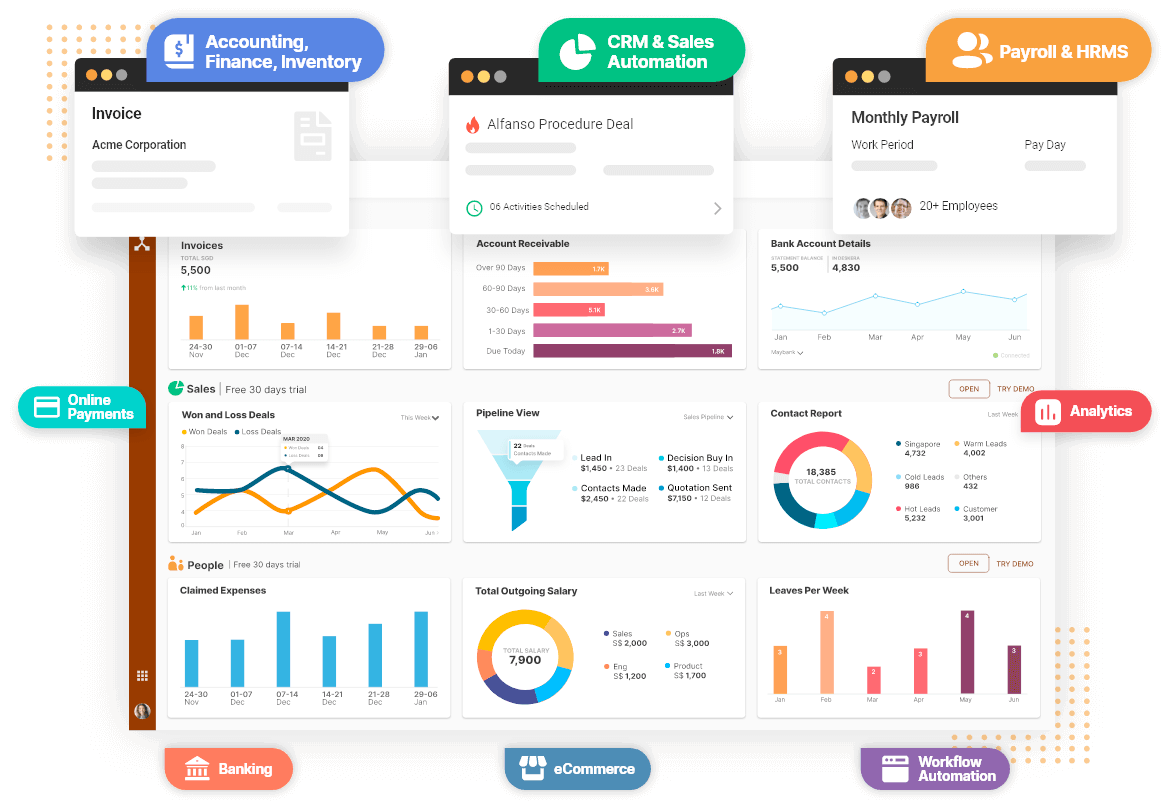Ever heard of Intermediate goods? Intermediate goods are those goods and services that one manufacturing unit purchases from another production unit during the course of the year and uses up completely or sells again within the same year.

In order to get a better idea of Intermediate Goods with Examples read the below article. Following are the topics covered:
- Intermediate Goods explained
- Classification of Goods
- How do intermediate goods help economic growth?
- Examples of Intermediate Goods
- Key takeaways
Intermediate Goods explained
A partially finished item is referred to as an intermediate good when it is used as a raw material to create another good that will eventually become a final good. Producer goods are another name for these products. Producer products are also referred to as intermediate goods because they are a crucial component of the production process.
In other words, the production of final or consumer commodities uses intermediate items. Additionally, they serve as ingredients in the final products and serve as inputs in the production of other items.
A consumer good, also known as a final good or finished product, is made from an intermediate item. They are also referred to as semi-finished items. There are three uses for intermediate commodities, which are as follows:
- Producing intermediate goods for personal use
- Selling them to other businesses
- Being bought by enterprises for a specific purpose or to create further intermediate products
The two industries that trade the most intermediate goods are electronics and transportation, which together consume more of them than any other industry. These two industries manufacture their products from other intermediate goods, which are produced from more complicated intermediate goods.
For instance, a semiconductor is a necessary intermediate item for the production of a bus or a computer and requires the input of other intermediate goods like metals and ceramics.
Characteristics of Intermediate goods
1. Obtained from one production unit by another
2. Used entirely in the creation of finished goods or added to closing stock
3. Resold within a year without changing anything.
4. Used into the production process to develop goods that can meet demand
5. Products in this category are partially finished or in the process of being finished. Businesses might develop intermediary items before utilizing them.
Points on Intermediate Goods
- One production unit buys them from another production unit. These products are produced within the permitted limits.
- Since the need for these commodities is derived from the demand for the finished goods, they have derived demand.
- These goods' worth is added to the value of the final product.
- Because they are already taken into account in the value of the final commodity to which they contributed, intermediate goods are not included in this total. The intermediate goods would be double counted if the GDP of the nation included both final and intermediate items.
- Intermediate goods can be consumed as a finished product or used as ingredients in other products if they fall under both the intermediate and finished goods inventory classifications.
- To prevent intermediate products from being tallied twice—once when they are acquired and again when the final good is sold—economists adopt the value-added approach when computing GDP with them.
- One would need to take into account the buyer in order to determine whether intermediate goods are sold as secondary intermediate goods or as consumer goods.
Categories of Intermediate Goods
Intermediary commodities can be divided formally into three groups. In the first group, they are created and utilized right away by the manufacturer to create finished goods; in the second category, they are created and sold to other businesses to create finished goods; and in the third category, they are sold to another business to create another intermediate good.
Typically, economists divide intermediate products into three groups:
- In-house: Produced and used in finished products by the same company.
- B2B, finished: Produced and sold to another company to create finished goods.
- B2B, intermediate: Made and sold to a different business, but used to create further intermediate goods.
Take the automobile sector into consideration to show these categories. Some manufacturers of high-performance automobiles, such as Lamborghini, produce most or all of the components. As an illustration, Lamborghini manufactures and assembles its engines internally. In this instance, Lamborghini manufactures its own intermediate goods, which it then incorporates into its finished/consumer goods.
However, it's more typical for one business to generate intermediate goods and then sell them to other producers so they may utilize them to create their finished goods. In the auto industry, an engine is frequently built by one company (an intermediate good) and sold to a vehicle manufacturer, who then uses it to make cars and market them to consumers.
In the car industry, secondary intermediate goods are frequently sold from one manufacturer to another and then utilized as raw materials to create a third intermediate good, which will then be used to create a fourth intermediate or final good.
A small business that specializes in pistons may sell it to a firm that creates custom engines as a secondary intermediate good before it is ultimately assembled into a car and sold to the final consumer.
How Intermediate Goods Work
The usage of intermediate goods normally has three choices. Producing and utilizing one's own intermediate goods is permitted. A very typical practice across sectors is for the manufacturer to first produce the items before selling them. In order to produce the completed good or a secondary intermediate product, businesses purchase intermediate goods.
Sometimes the intermediate goods that go into the finished product include services. For instance, a live musician might be considered an intermediate good because their final product is music.
Since intermediate goods would be included twice—once when they were bought or sold in their original form and again when the final consumer good was sold—they are not included in a nation's gross domestic product. The value-added technique is a method for estimating the income contribution of intermediary items. With this method, the value of a product is determined at every stage of production.
Track & Manage Intermediate Goods
In the inventory management process of an organization, intermediate products typically have their own place. When it comes to physical storage, for instance, intermediate goods are frequently kept adjacent to one another and in a chronological order that makes sense for the production process.
Operationally, optimizing the inventory of intermediate items is equally crucial to optimizing the inventory of completed goods. Under stocking could result in production delays for completed items, which could result in stock outs — that is, not enough product to satisfy consumer demand. Overstocking will result in higher carrying costs and run the risk of ingredients rotting or going out of date.
Software for inventory management enables a comprehensive view of inventory by gathering information about each stage of the supply chain, from raw materials through intermediate items to completed goods that will be necessary for planning and forecasting.
The cloud-based technology automates inventory tracking, maintaining the accuracy of all amounts and providing the company with the data required to minimize over- or under stocks, eliminate needlessly high holding costs, and establish the best reorder points for intermediate goods.
Classification of Goods
What are Final Goods?
A commodity used by the user to satisfy their immediate wants rather than to create another good is referred to as a final good or a consumer good. Anything used by the consumer, such as a bicycle or a microwave, is a final good.
- On the other hand, these intermediate commodities are those that are used later in the production process, like milk, which is needed to make curd or other dairy products. The word "final products" only refers to newly produced goods as measured in terms of national revenue and production.
- To prevent counting the same object twice depending on resale, GDP removes items that were counted in a previous year. Raw materials and manufactured goods are not the same. A product that is used or consumed by the ultimate user is referred to as a final good. The good doesn't need to be processed any more (product). A business produces a finished good for the final user's immediate use.
- The term "end consumer" refers to the individual or group who uses a good or service. This person is sometimes referred to as the ultimate consumer. Consumer items and final goods have the same definition. Food, gas, clothing, and televisions are examples of end items that are used in homes.
- The finished result may be either robust or weak. Food and petroleum are examples of non-durable goods that are consumed in less than three years. Televisions and clothing are regarded as long-lasting because they last for more than three years.
Since consumer spending makes up the majority of the GDP, economists must carefully study it when determining the state of the economy. Final commodities are also referred to as consumer goods because the end customer consumes them. Items used in the creation of a finished product are known as intermediate goods. Since cotton is used as a fabric in shirts, it is an illustration of an intermediate good.
Since they would be tallied twice—once as an intermediate item and again as a final good—the GDP would be overestimated as a result. Even if the second user is the ultimate user, resold final products like used cars or furniture are excluded from the definition of consumer expenditure. Resold items were counted once they were sold to the original customer (new). The production of the economy would be overstated if they were included once more.
Only final goods are counted as new goods when determining national income and output, or GDP. The gross domestic product (GDP) of a nation is known as GDP.
Products that we included in previous years' GDP while they were being manufactured, for instance, won't be included in GDP this year. We don't want to count them more than once or twice. The term "final goods" is used to measure GDP and refers to both finished goods and new things. In order to compute Gross Domestic Product, the market value of newly created final goods during the year must be determined.
Consumer Goods and Capital Goods are the two subcategories of Final Goods:
Consumption Goods: Food, clothing, and services purchased for consumption all fall under the category of consumption goods. It is also referred to as consumer goods and can be either durable or not.
Capital Goods: Durable tools, machinery, and other items that are used in manufacturing but are not transformed are known as capital goods. These things are referred to as capital goods, and they lose value over time. Industries and businesses purchase these commodities to support capital stock and facilitate output.
Let's now analyze how final goods and intermediate goods differ from one another.
Classifying Goods as Intermediate and Finished Goods
The best way to categorize products as intermediate or final goods is based on their intended purpose rather than the product itself. Any commodity can be categorized as a final good or an intermediate good depending on how it is used.
Items that we purchase for immediate use or consumption are referred to as final goods, consumption goods, or finished commodities. Things that are used to make final goods, such as raw materials, are referred to as intermediate goods. Fixed inputs known as capital goods are used in the production of other goods.
- Components or resources are referred to as intermediate goods when they are employed to create completed goods. Intermediate goods, also known as producer goods or semi-finished products, are usually traded between companies, such as when a producer sells to a manufacturer. Although an essential component of production, intermediate goods are frequently unfinished and unfit for the final customer.
- An example will help you better comprehend this. Bread is made with salt, and salt is also consumed directly. Here, salt serves as an illustration of how a good can transform into both an intermediate and a final good. While salt used for direct consumption is categorized as a final product in this instance, salt utilized in the manufacturing of bread serves as an intermediate good.
- Contrarily, finished items are additionally known as final goods or consumer goods. They are prepared for sale and require no additional processing. Finished products may be offered for direct sale to consumers or to other companies. Consider a maker of computers as an illustration. Microchips, motherboards, and hard drives are examples of the intermediate goods they may make themselves or buy from another business. The customer-ready computer that has been entirely constructed would be their finished product.
- A consumer good is something that someone purchases for their personal use or consumption. The lifespan of a consumer good ends when it is purchased by a person or other entity. That person neither sells it nor utilizes it to build anything else. However, when someone or a business purchases an intermediate good, their trip is not yet complete.
Depending on who purchases a product, it may be either an intermediate or consumer good. It is a consumer good if I buy salt and bring it home for usage by everyone in the house. On the other hand, salt is an intermediate good when it is purchased by bakers to be added to their goods. For the salt, the journey is not over yet. The baker then sells the bread after seasoning it with salt.
Capital goods vs. intermediate goods
Despite the fact that both individuals and organizations purchase capital and intermediate commodities for the manufacturing process, the two concepts are distinct.
A capital good often does not change while being produced. An example of a capital good is a baker's oven. It facilitates bread making. Nevertheless, the oven is unharmed while being produced. Additionally, the oven is not a component of bread.
Contrarily, bread ingredients include wheat or salt. They are used up throughout the manufacturing process. We refer to them as intermediate goods as a result.
How do intermediate goods help economic growth?
A healthy market is a sign of a healthy consumer sector since firms need capital and intermediate commodities to generate goods and services. According to the United States International Trade Commission, the value of imports of all three categories of goods increased in the United States between 2009 and 2017. Second only to capital goods, which increased by 66% to $77.6 billion, imports of intermediate goods increased by 48% to $34.7 billion.
These figures show healthy trade flows, which can be made possible by astute trade policy. International economics takes into account how tariffs can raise trade costs, slow down supply chains, and alter the availability and costs of intermediate and final goods.
Intermediate Goods and GDP
Gross domestic product, or GDP, is a commonly used phrase in economics. GDP is the total amount of goods and services produced in a nation during a given time frame, often one year. It is the total market value of goods and services used by consumers.
This depicts the economic situation and includes the output of the enterprises in a nation. Since intermediate goods are employed to build final items that are sold on the market, the GDP does not assign them a value. However, intermediate goods increase the value of the finished commodity, which is reflected in GDP.
Since the price of final items is typically only counted once, not include them in the GDP would result in double counting of the value of the goods. The importance of intermediate goods in determining a nation's Gross Domestic Product (GDP) cannot be overstated. Therefore, incorrect GDP calculations as a result of incorporating intermediary items would result in a significant overestimation of GDP.
Imagine a farm that grows blueberries and sells them to nearby grocery shops, members of the public who come to the farm during the summer, and a company that makes jam as a basic illustration of the idea.
The farm's sales of blueberries to the general public are counted when determining the farm's contribution to the US GDP; however, sales of blueberries to supermarkets and a jam factory are not. This avoids duplicate counting since the product will be sold to end users by grocery stores and jam producers, who will also be included in the GDP calculation.
This means that if a confectioner purchases sugar to add to her candy, the purchase can only be counted once—when the candy is sold, not when the confectioner purchases the sugar for manufacture. Because it appreciates each step in the production process that results in a finished good, this technique is known as a value-added strategy.
Examples of Intermediate Goods
Typically, when we consider the parts that make up a final product, we consider tangible raw materials like wood, metal, glass, or cloth. Although this isn't incorrect, intermediary commodities aren't always just physical goods.
If services are utilized as a raw material in the manufacture of other goods, they can also be regarded as intermediate goods. Following are some instances of both tangible products and services that function as intermediary goods:
- Sugar-Numerous consumer goods have sugar as a primary ingredient. When purchased and utilized by the consumer, it also functions as a consumer good in and of itself. When sold as sugar in the store, sugar is used as a finished good. When used as an ingredient in other food products, it is utilized as an input.
- Photography-If the photographer, for instance, provides photos to a newspaper, magazine, or television station that use them in their final product, it is an example of a service employed as an intermediary good. The camera that was used to take the photographs in this case would be a capital good.
- Steel –Steel is a raw material used to make numerous other products, including bicycles.
- Salt – practically all food production involves the use of salt.
- Engines and auto parts-Car engines are an example of an intermediate good, as was already mentioned. They can be created and employed by the same automaker, or more frequently, they are created and sold to other businesses for the creation of automobiles. Some businesses manufacture and utilise their own, while others purchase them as an intermediary good from other producers to use in their own vehicles.
- Wood - Wood is utilized for a variety of tasks, including the construction of buildings and the manufacture of furniture.
- Silver, gold and other metals- Jewelry, cooking utensils, tools, and auto parts are examples of things made from metal that need the creation of metallic intermediate goods.
- Paint- Paint is an excellent example of an intermediate good that can be a consumer good when supplied directly to homeowners. Paint is typically manufactured and sold among numerous sectors.
- Plywood, pipe, tube, and other components.
- Glass-Glass is an intermediate good since it is used to make things like windows, tableware, dishes, cups, and bottles.
- Goods purchased for further production, such as milk used to make sweets
- Paper purchased by a publisher,
- Goods purchased for resale (such as Milk purchased by a dairy Shop).
- Rice bought by a supermarket store.
- The usage of chlorine in the manufacture of polyurethane, which does not contain chlorine, is an intriguing example. Chlorine is created by electrolyzing rock salt, and when it reacts with carbon monoxide, it produces phosgene. Then, a reaction between phosphone, a chlorine compound, and a diamine results in a diisocyanate and hydrochloric acid, which are then neutralised on-site. Waste chloride salt is used to eliminate the chlorine.
A diol and a diisocyanate react to create polyurethane, which is chlorine-free. Chlorine is employed because it lowers the atom economy and is electromotive enough to create an isocyanate without becoming a component of the final product.
- As you can see, depending on the product and industry, the majority of intermediate items have various uses. For instance, the supply chain for a maker of flooring and furniture may include the same wood supplier. Although the wood will be used for various things, it will still be considered an intermediate good in both cases.
- Examples of products that are manufactured and then sold to other businesses in a partially finished state include steel, which is used to finish off buildings, bridges, cars, and trains; wood, which is used to build homes and create furniture and hardwood flooring; precious metals like gold and silver, which are used to create jewellery; and glass, which is used to create windows, ornaments, wine bottles, and photo frames.
- Finally, secondary intermediate goods can be created using intermediate goods. For instance, a farmer might raise flax plants that are subsequently sold to a miller (as an intermediary good) for processing into flaxseed (commonly used in many types of healthy food)
Then, a company that makes granola bars purchases the flaxseed (as a secondary intermediate good) and sells the finished banana chocolate chip flaxseed granola bars to customers at the grocery store.
Services as an Intermediate Good
It's important to recognize that services may be viewed as intermediate goods. For instance, in the photography sector, the actual photographs are the end good, but the service of processing images is considered the intermediate good.
Other service-oriented sectors include those that offer banking, insurance, cleaning, landscaping, and public transportation as intermediary goods.
They are typically categorized as such when utilized to create other products that are sold to the general public. They gradually merge with the manufactured goods, though. For instance, when flour is a component of baking, a new product, like a cake, is created. In this case, flour would therefore be an intermediate good.
How Can Deskera Help you?
Deskera Books will assist in inventory management, automate inventory tracking and their insights. It also have backorder management which will ensure that you never fall short of any inventory. Deskera Books will also help you to keep a track of your outstanding account receivables and account payables, hence ensuring you have a healthy cash flow.
Deskera can assist with customer relationship management, human resource management, attendance management, and payroll administration.

Try Deskera to alleviate your business workload. For a range of sectors, use free, downloadable, and customizable invoice templates, automated invoicing, billing, expenses, payments, accounting, inventory, recording all deposits, and much more.
To learn more about Deskera and how it works, take a look at this quick demo:
Key takeaways
- In addition to being essential components in the creation of all manufactured items, intermediate goods also contribute to a wide range of services. Businesses may produce intermediate goods to be used in the production of their own finished goods or sell them to third parties.
- The notion that intermediate products are transformed as part of a manufacturing production process to produce consumer goods, or "secondary" intermediate goods, is a crucial feature of intermediate goods (i.e., something used in a subsequent manufacturing process). In other words, they either become a part of the final product or undergo significant alteration.
- The cost expended by a production unit to acquire products and services from other production units that are intended for resale or for consumption in full during the same year is referred to as intermediate consumption.
- It's crucial to monitor each stage of the production process since intermediate goods are incomplete and require additional processing. Inventory management software that automates your entire process will make it the easiest for you to keep track of everything in your warehouse.
Related articles













